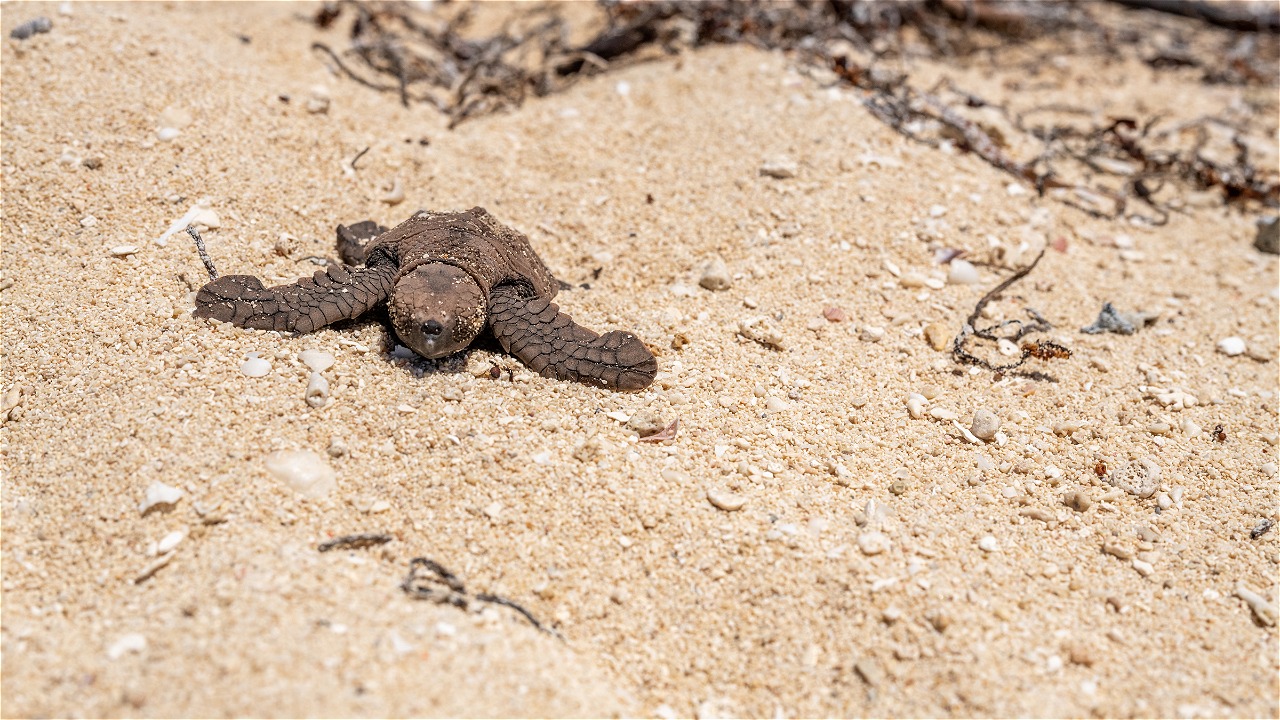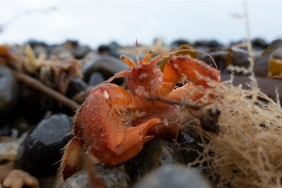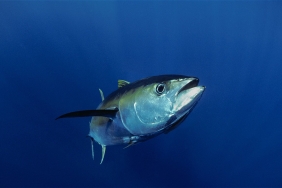144 HAWKSBILL TURTLE HATCHLINGS RELEASED IN KEI KECIL BY COASTAL COMMUNITIES, A KEY CONSERVATION TOOL
By: Frederik Peter Alan Batkormbawa (Yamdena MPA Site Representative, WWF-Indonesia Inner Banda Arc Subseascape)
The blue sky and hot afternoon sun brought us, WWF-Indonesia Inner Banda Arc Subseascape (IBAS) to Hoat Island, Manyeuw District, Southeast Maluku Regency. The news from Mama Ina, one of the seaweed fishermen on Hoat Island, became our goal in visiting the island which is included in the Ten Petuanan Ohoi Debut Island.
"Hawksbill turtle eggs (Eretmochelys imbricata) have hatched on the beach yesterday, we want to release them to the sea today. There are 144 hatchlings," Mama Ina said on the other end of the phone. Mama Ina and the Hoat Indah Seaweed Fishermen Group often find sea turtles climbing and laying eggs on Hoat Island. Not surprisingly, Hoat Island is indeed one of the nesting beaches (nesting area) in the Marine and Small Island Conservation Area, Small Kei Island, Islands and Surrounding Waters.
Arriving at Hoat Island, Mama Ina and some fishermen were waiting for us to go to the hatchery. We waited for sunset to release the hatchlings. As positive phototaxis animals that move closer to light sources, hatchlings use sunlight as a guide to the sea. Sunrise and sunset are the best times to release the hatchlings as there are few predators at these times.
"If you find turtle eggs in the nest, just leave them alone. Just watch out for predators," explained Yulius, Marine Species Assisstant, WWF-Indonesia, sharing information about monitoring and handling hatchlings to Mama Ina and some fishermen.
"For that, to make the hatchlings safe, you can just give a protective cover to the nest," he added with Mama Ina's nod of understanding.
As the sun began to set on one of the beaches of Hoat Island, we released 144 hawksbill turtle hatchlings into the sea. "If the turtles rise and lay eggs again, you can release them later by yourself, the important thing is that you understand how to do it," Yulius added as we watched the hatchlings race to the sea water.
Mama Ina and the Seaweed Fishermen Group on Hoat Island are examples of coastal communities who care about conservation, especially protected species such as sea turtles. Kei Islands is one of the feeding areas and migration routes for sea turtles to Papua and Australia. This is also the cause of the high utilization of turtle meat and carapace in the Kei Islands, a serious threat to turtle conservation.
Community development and empowerment on conservation in coastal areas and small islands is important given the high intensity of their direct interaction with the Endangered Threatened and Protected (ETP) biota.
Conservation empowerment makes coastal communities spearhead the future of conservation. The government and conservation activists need to encourage more understanding of conservation among coastal communities. Conservation does not prohibit, but teaches people to care about natural resources, and manage them sustainably for future generations.





